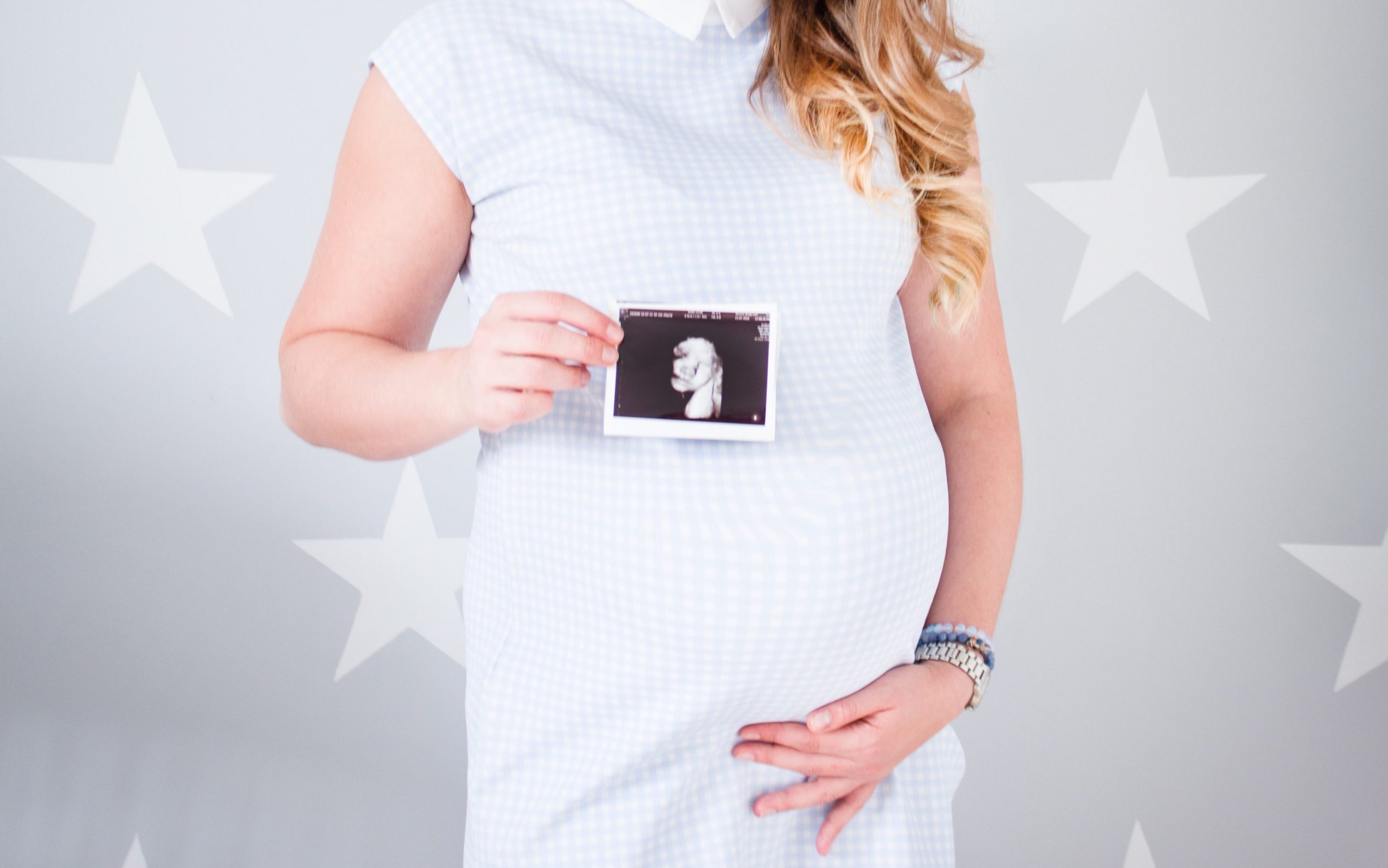
Your Baby’s Eyelids Start to Open!
During Week 22 of pregnancy, your baby continues to grow and develop rapidly. Here are some key developments and milestones happening during this stage:
- Size and appearance: By Week 22, your baby measures around 10.9 to 11.8 inches (27.7 to 30 centimeters) in length and weighs approximately 15.2 to 17.8 ounces (430 to 505 grams). The body is becoming more proportionate, with the head and body in better alignment.
- Developing senses: Your baby’s senses continue to develop. Their hearing is improving, and they can hear a wider range of sounds, including your voice, music, and external noises. They may even respond to familiar voices or sounds by moving or kicking.
- Eyelid opening: Your baby’s eyelids, which were fused shut, start to open during this stage. This allows their eyes to begin perceiving light and darkness. However, the eyesight is still developing, and their vision will be blurry.
- Rapid brain development: The brain continues to grow rapidly, forming intricate neural connections. This process is crucial for various cognitive and sensory functions.
- Developing taste buds: Taste buds are forming on your baby’s tongue. They can taste the flavors of the amniotic fluid, which can be influenced by the foods you eat.
- Developing lungs: While the lungs are still maturing, your baby’s respiratory system is developing further. The lungs continue to produce surfactant, a substance that helps the air sacs inflate and prevents them from collapsing.
- Developing facial features: Your baby’s facial features are becoming more defined. Their lips, eyebrows, and eyelashes continue to develop, and their facial muscles allow for various expressions.
- Developing skeletal system: Your baby’s skeletal system continues to ossify, or turn from cartilage into bone. The bones are growing and becoming stronger.
- Developing sense of touch: Your baby’s sense of touch is becoming more refined. They can feel different sensations, such as pressure, movement, and touch, within the amniotic fluid.
- Swallowing and digestion: Your baby continues to swallow amniotic fluid and practice swallowing and digesting. The digestive system is maturing, and the intestines are absorbing nutrients from the fluid.
- Developing reproductive system: If you’re having a baby girl, her uterus and fallopian tubes are now formed. If you’re having a baby boy, his testes are starting to descend from the abdomen into the scrotum.
- Active movements: Your baby’s movements are becoming stronger and more coordinated. You may feel more distinct kicks, rolls, and jabs as your baby explores and interacts with the environment within the uterus.
Remember that these milestones and changes are general guidelines, and the exact timing and progression of development can vary slightly from one pregnancy to another. Your healthcare provider can provide more personalized information about your baby’s growth and development during your prenatal appointments and ultrasounds.
Be Mindful of the That Develops During Pregnancy!
Gestational diabetes is a form of diabetes that develops during pregnancy. It affects how your body uses sugar (glucose) and can lead to high blood sugar levels. Understanding the risk factors and management of gestational diabetes is important for a healthy pregnancy. Here’s what you need to know:
Risk Factors:
- Obesity or excessive weight gain: Being overweight or gaining too much weight during pregnancy increases the risk of gestational diabetes.
- Family history: Having a family history of diabetes, particularly in parents or siblings, increases the risk.
- Previous history of gestational diabetes: If you had gestational diabetes in a previous pregnancy, the risk of developing it again is higher.
- Polycystic ovary syndrome (PCOS): Women with PCOS have a higher risk of developing gestational diabetes.
- Age: Women over the age of 25 are at a higher risk.
- Ethnicity: Women of certain ethnicities, including Hispanic, African American, Asian, and Native American, have a higher risk.
- Pre-existing conditions: Having prediabetes or conditions such as hypertension (high blood pressure) or high cholesterol before pregnancy increases the risk.
- Multiple pregnancies: Women carrying multiple babies (twins, triplets, etc.) have a higher risk.
Management:
- Glucose screening: Between Weeks 24 and 28 of pregnancy, you’ll typically undergo a glucose screening test. This involves drinking a sugary solution and having your blood sugar levels tested afterward to determine if you have gestational diabetes.
- Monitoring blood sugar levels: If diagnosed with gestational diabetes, you’ll need to monitor your blood sugar levels regularly. Your healthcare provider will guide you on how often to check and what target ranges to aim for.
- Healthy eating: Follow a well-balanced diet with controlled carbohydrate intake. Eat a variety of nutrient-dense foods, including whole grains, lean proteins, fruits, vegetables, and healthy fats. Avoid sugary and processed foods.
- Regular physical activity: Engage in regular, moderate-intensity exercise as recommended by your healthcare provider. Physical activity helps control blood sugar levels and promotes overall health.
- Medication or insulin: Some women with gestational diabetes may require medication or insulin injections to manage their blood sugar levels. Your healthcare provider will guide you on the appropriate treatment plan if needed.
- Regular prenatal care: Attend regular prenatal check-ups to monitor the health of both you and your baby. Your healthcare provider will monitor your blood sugar levels, fetal growth, and overall well-being.
- Fetal monitoring: Gestational diabetes can increase the risk of certain complications, such as macrosomia (a larger-than-average baby) and early delivery. Your healthcare provider may perform additional ultrasounds and tests to monitor your baby’s growth and well-being.
- Postpartum follow-up: After giving birth, you’ll need follow-up testing to ensure your blood sugar levels return to normal. Gestational diabetes increases the risk of developing type 2 diabetes later in life, so it’s important to continue monitoring your health.
It’s crucial to work closely with your healthcare provider, a registered dietitian, and other members of your healthcare team to manage gestational diabetes effectively. With proper management, most women with gestational diabetes have healthy pregnancies and give birth to healthy babies.
Ideas and Planning Tips to Prepare for Your Baby Shower!
Preparing for a baby shower is an exciting part of the journey towards welcoming your little one. It’s a special occasion where friends and family gather to celebrate and shower you and your baby with love and gifts. Here are some ideas and planning tips to help you prepare for your baby shower:
- Set a date and time: Choose a date that works well for you and your guests, typically during the third trimester. Consider weekends or evenings when most people are available.
- Select a theme: Decide on a theme that reflects your personal style or interests. It could be based on a specific color scheme, nursery theme, favorite children’s book, or any other idea that resonates with you.
- Create a guest list: Compile a guest list with input from close family members and friends. Consider the space available for the event when finalizing the number of guests.
- Choose a venue: Decide whether you want to host the baby shower at your home, a friend’s house, a restaurant, a community center, or any other suitable location. Ensure the venue can accommodate your guest count and any planned activities.
- Send invitations: Create and send out invitations well in advance, allowing guests ample time to RSVP. You can choose traditional paper invitations or opt for electronic invitations for convenience.
- Decorations: Decorate the venue according to your chosen theme. Use balloons, banners, table centerpieces, and other decorative items that match the theme or color scheme. Consider incorporating baby-related elements like diaper cakes or baby clothes as decorations.
- Plan activities and games: Organize fun and interactive activities and games for your guests to enjoy. Classic baby shower games include guessing the baby’s birth date, baby item trivia, or diaper changing challenges. Be mindful of the preferences and comfort levels of your guests when selecting activities.
- Menu and refreshments: Plan a menu that suits the time of day and preferences of your guests. Consider a mix of sweet and savory options, finger foods, and refreshing beverages. If you prefer, you can have a potluck-style shower where guests contribute their favorite dishes.
- Gift registry or suggestions: Create a baby registry or provide suggestions for gifts, if desired. This can help guests choose gifts that you actually need and appreciate. Include registry information or suggestions on the invitations or provide them separately.
- Thank-you gifts: Consider preparing small thank-you gifts or favors for your guests to express your gratitude for their presence and support. It could be something simple like personalized keychains, candles, or mini succulents.
- Capture the memories: Arrange for someone to take photos or hire a photographer to capture the special moments of the baby shower. These photos will become cherished memories of this joyous occasion.
- Enjoy the celebration: On the day of the baby shower, relax and enjoy the celebration. Take the time to connect with your loved ones and express your gratitude for their presence. Embrace the love and excitement surrounding the arrival of your baby.
Remember, the most important aspect of the baby shower is celebrating the upcoming arrival of your little one surrounded by loved ones. Plan the event based on your preferences and make it a reflection of your unique journey.


Comments